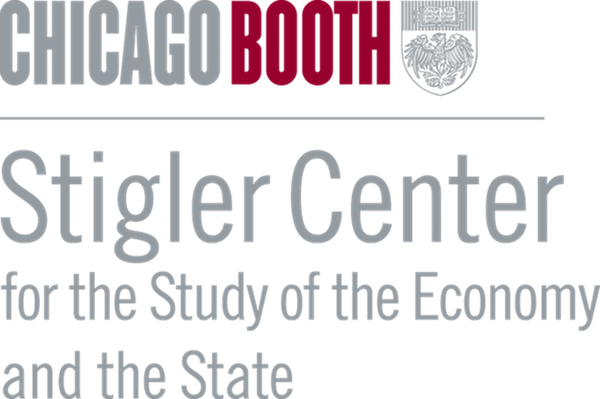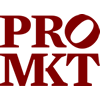Vertical merger law lacks the structural presumption of horizontal merger law, which shifts the burden from the government to the merging parties to provide evidence that a merger will not produce anticompetitive effects when it is known that the merger will substantially increase market concentration. To improve Guideline 6 of the draft Merger Guidelines concerning vertical foreclosure, Steven Salop develops a three-factor criteria with which the government antitrust agencies can show an analogous structural “inference” that shifts the burden of evidence to the merging parties.
A core feature of United States horizontal merger law and enforcement is the “structural presumption.” If a merger sufficiently raises the level of concentration in a highly concentrated market, those facts are sufficient to satisfy the antitrust agency’s prima facie burden and shift the burden to the merging parties to produce rebuttal evidence. The structural presumption is a legal presumption created in U.S. v Philadelphia National Bank by applying a combination of statutory interpretation, economic analysis, and decision theory. As stated there:
Specifically, we think that a merger which produces a firm controlling an undue percentage share of the relevant market, and results in a significant increase in the concentration of firms in that market, is so inherently likely to lessen competition substantially that it must be enjoined in the absence of evidence clearly showing that the merger is not likely to have such anticompetitive effects. Such a test lightens the burden of proving illegality only with respect to mergers whose size makes them inherently suspect in light of Congress’ design in § 7 to prevent undue concentration. Furthermore, the test is fully consonant with economic theory.
There is no similar anticompetitive presumption for foreclosure concerns in vertical mergers.
There is no similar anticompetitive presumption for foreclosure concerns in vertical mergers. As explained by the D.C Circuit in U.S. v AT&T Inc.:
Instead, the government must make a “fact-specific” showing that the proposed merger is “likely to be anticompetitive.” Once the prima facie case is established, the burden shifts to the defendant to present evidence that the prima facie case “inaccurately predicts the relevant transaction’s probable effect on future competition.”
“Fact-Specific” Structural Evidence For Vertical Merger Foreclosure Concerns
It would be useful to have analogous structural evidence for vertical mergers—fact-specific evidence that would be sufficient to establish the prima facie case and shift the burden while maintaining consistency with Philadelphia National Bank that “the amended §7 was intended to arrest anticompetitive tendencies in their ‘incipiency.’” This fact-specific structural evidence would provide such a sufficient “probabilistic inference” of ability and incentive on the part of the merging parties to engage in an anticompetitive foreclosure strategy that would be similar to the “legal presumption” for horizonal mergers.
This article develops a three-factor fact-specific showing for mergers that raise significant input foreclosure concerns. This required showing improves upon Guideline 6 in the draft Merger Guidelines, which states that “vertical mergers should not create market structures that foreclose competition,” and upon my earlier proposals (here and here). Evidence satisfying all three factors raises substantial risk that the merged firm would have the ability and incentive to engage in a foreclosure strategy that would raise the costs or otherwise significantly disadvantage enough rivals that purchase the input brand sold by the upstream merging firm, thereby raising a substantial risk of lessening competition in the downstream market and harming customers.
This approach to the structural evidentiary requirements to satisfy the Agency’s prima facie burden consists of three factors, where either Factor 3A or (preferably) 3B might be selected:
(1) The merging firm controls a 50% (or more) foreclosure share for the brand of input it supplies, where the foreclosure share is measured by the fraction of purchases of its brand by “foreclosable firms (i.e., rival participants in the downstream output market that purchase some or all of this input product from the upstream merging firm); and
(2) The input product supplied by the merging firm and others is “material” to downstream rivals in the sense that elimination of access or worsened terms for this input would place them at a material competitive disadvantage that could lead to competitive harm to customers of the downstream firms; and
(3A) A hypothetical merger of the downstream merging firm and all the foreclosable rivals would violate the concentration and market share thresholds contained in the usual horizontal merger structural presumption (i.e., Guideline 1 in the 2023 draft Merger Guidelines); or
(3B) A hypothetical acquisition by the downstream merging firm of a 50% passive ownership interest in all the foreclosable rivals would violate the concentration thresholds of Guideline 1 (i.e., post-merger mHHI > 1800; mHHI increase > 100).
Factor 1 (Foreclosure Share)
The foreclosure share is a proxy measure of the upstream merging firm’s market power over the “foreclosable rivals,” that is, the rivals of the downstream merging firm for which the merging firm’s input brand comprises some or all of their purchases of this input product. Foreclosure entails the merged upstream firm denying them access or worsening their terms by delays, degraded quality, discriminatory prices or so on.
Consider an extreme example in which the upstream merging firm is the sole provider of an input product used by all the downstream competitors in the pre-merger market. In this case, the foreclosure share would be 100% and all the downstream rivals would be “foreclosable.”
Consider next a less extreme example with a 50% foreclosure share. Because a 50% market share is the minimum share to proxy monopoly power, a 50% foreclosure share can be treated as sufficient evidence of the upstream merging firm’s substantial market power over the foreclosable rivals as a group. This 50% can occur in various ways. For example, suppose that the merging input supplier accounts for 100% of the relevant input product purchases by firms accounting for 50% of downstream sales by rivals, and 0% for the others, implying a foreclosure share of 50%. Or, suppose all the rivals might purchase half their needs from the upstream firm; or half buy 75% and the other half buy 25%; or so on.
Factor 1 might be undermined by evidence that the upstream merging firm lacks the power to raise price, despite its large (even 100%) foreclosure share. For example, it might be shown that the upstream firm was setting the “limit price” for a homogeneous input product, such that a small price increase would lead it to lose such a substantial share of sales that foreclosure could not be profitable. This rebuttal might be countered by evidence that the input product is differentiated or that upstream competitors might accommodate the foreclosure with their own price increases.
Factor 2 (Material Input Product)
If foreclosure is to lessen competition, the input product must be “material” to the downstream foreclosable rivals, that is, elimination of access or worsened terms for the input product would place the foreclosable rivals at a material cost or other competitive disadvantage that could lead to competitive harm to downstream customers.
Factor 2 might be undermined with evidence rebutting this material disadvantage. For example, evidence might show that the downstream rivals would substitute to another input if the merging firm raised input price by more than (say) 50%, and that even after this 50% price increase, the rivals’ costs would only be increased by less than (say) 1%. As a concrete illustration, suppose that the input product is paper clips supplied to competing law firms.
Factor 3 (Impact on Downstream Market Structure)
Evidence that some downstream rivals are materially disadvantaged is not sufficient by itself to satisfy the prima facie case. There also must be evidence of a substantial risk that downstream market competition is lessened. To illustrate, suppose that the upstream merging firm has a foreclosure share of 100% for a single downstream rival with a 5% market share. Suppose the downstream merging firm also has a 5% market share. Even if the small rival were to exit, most of its lost sales likely would divert to non-foreclosed competitors, not the downstream merging firm. On these facts, harm to downstream consumers would be minimal even if the merged firm retained an incentive to foreclose.
I next analyze two alternative formulations of Factor 3, their relative advantages, and my preference for Factor 3B.
Factor 3A (Hypothetical Downstream Market Merger)
Factor 3A measures the impact on the HHI of a hypothetical merger between the downstream merging firm and all the foreclosable rivals. The rationale for this evidence is that the upstream merging firm has indirect control over the prices of the foreclosable rivals, resulting from its ability to raise their costs or worsen their terms. If the downstream merging firm hypothetically acquired the foreclosed rivals, it would have direct control over their prices. Thus, the indirect control from foreclosure might be treated as nearly equivalent to the direct control from the hypothetical merger. Factor 3A would be satisfied by evidence that this hypothetical merger would satisfy the horizontal merger structural presumption.
Factor 3B (Hypothetical Partial Ownership Acquisition)
Factor 3A is subject to criticism. A foreclosure strategy gives the upstream merging firm less than total control over the foreclosable firms, so the impact is less than what would occur from a full merger. In “When Vertical is Horizontal” article, Serge Moresi and I showed that the structural analogue to the impact of input foreclosure on the downstream market HHI is not exactly the same as this merger. This partial control leads to upward pricing pressure (“UPP”) on the foreclosable rivals’ prices. But, because a foreclosure strategy gives the upstream merging firm only partial control over the prices, the impact is less than what would occur from a full merger of the downstream merging firm and the foreclosable rivals.
Further analysis can translate this UPP into an effect on a modified HHI (“mHHI”). This relevant mHHI is derived from a set of hypothetical transactions in which the foreclosable rivals gain passive partial ownership shares in the downstream vertical merging firm, which gives them incentives to raise their prices. This set of hypothetical transactions leads to the same mHHI effect as would a hypothetical transaction in which the downstream vertical merging firm gains passive partial ownership shares in all the foreclosable rivals. The analysis shows that the equivalent partial ownership shares equal the cost pass-through rate of the upstream merging firm. Economists often assume a pass-through rate of 50% as a first approximation, which then can be incorporated into Factor 3B.
Factor 3B specifically involves a hypothetical acquisition by the downstream merging firm of 50% passive ownership interests in all the foreclosable rivals. Factor 3B is satisfied if the mHHIs exceed the concentration thresholds of Guideline 1 (i.e., post-merger mHHI > 1800; delta mHHI > 100). (This is hypothetical in that a real world 50% ownership share likely would not be passive.)
The mHHI and delta mHHI (i.e., delta mHHI = increase in the mHHI) are closely related to standard merger HHI calculations. The delta mHHI for a hypothetical 50% passive ownership share equals 50% times the product of the shares of the downstream merger partner and all the foreclosable firms (i.e., versus two times the product for a merger). The passive ownership post-merger mHHI here equals the pre-merger HHI plus 50% times the product of the shares of the downstream vertical merging firm and the foreclosable rivals.
If the downstream merging firm’s market share is 20% and foreclosable rivals’ share is 60%, the mHHI increase equals 600 (i.e., .50 x 20 x 60). With these shares, the first approximation for diversion would be that the merging firm captures half the sales lost by the foreclosed rivals, with the other half going to non-foreclosed firms (whose share is also 20%).
Factor 3 might be undermined by evidence indicating a different relevant market, different market shares or a lower pass-through rate.
Comparing Factors 3A and 3B
An advantage of Factor 3A is that it applies the familiar structural presumption and has an intuitive appeal. The advantage of Factor 3B is the fact that it derives from a rigorous economic model and is not vulnerable to the criticism that the impact on the foreclosable rivals is not identical to the effect of their hypothetical acquisition by the downstream merging firm. While Factor 3B utilizes a modified HHI, the calculation is not difficult; modified HHIs also are used for challenges to partial ownership acquisitions, so they should not create a major new analytic complexity for staff, counsel, or courts.). Thus, I prefer Factor 3B.
For completeness, note that Factor 3B could be expanded to include a delta mHHI term accounting for the separate incentive to raise the price of the downstream merging firm, a change that would raise the delta mHHI. This expansion involves the so-called Chen effect, which occurs even if there is no foreclosure incentive. However, rather than take the Chen effect into account in the structural evidence for the prima facie burden, it is analyzed here in the context of the elimination of double marginalization (EDM) rebuttal as an “opportunity cost” of passing-through EDM as lower prices which mitigates or even reverses downward pricing pressure from merger-specific EDM.
Rebuttal Evidence
If this structural evidence stands unrebutted, the burden shifts to the merging parties to produce rebuttal evidence regarding the overall competitive effect of the merger. These could include evidence of “EDM pass-through” (i.e., downward pricing pressure after taking account of the opportunity cost/Chen effect and anticipated downward pricing responses by downstream competitors), other cost and quality efficiencies, and the usual possible rebuttals involving asymmetric diversion ratios, entry, intense competition, rival counterstrategies, etc. If this rebuttal evidence is unrebutted and sufficient, the burden shifts back to the antitrust agency to carry its ultimate burden of persuasion.
Conclusion
It is reasonable to treat the structural evidence in Factors 1, 2 and 3B together as sufficient to satisfy the Agencies’ prima facie burden and shift the burden to the merging parties to rebut the anticompetitive inference. This structural evidence can represent a step forward in the analysis of all mergers (vertical, complementary products or conglomerate mergers) that raise foreclosure concerns. Some may cling to an outdated ideological view that vertical mergers in oligopoly markets deserve strong procompetitive presumptions and minimal enforcement. But modern analysis has shown that this approach is neither empirically nor theoretically supportable. Upward pricing pressure from foreclosure and Chen effects are inherent effects in concentrated oligopoly markets






